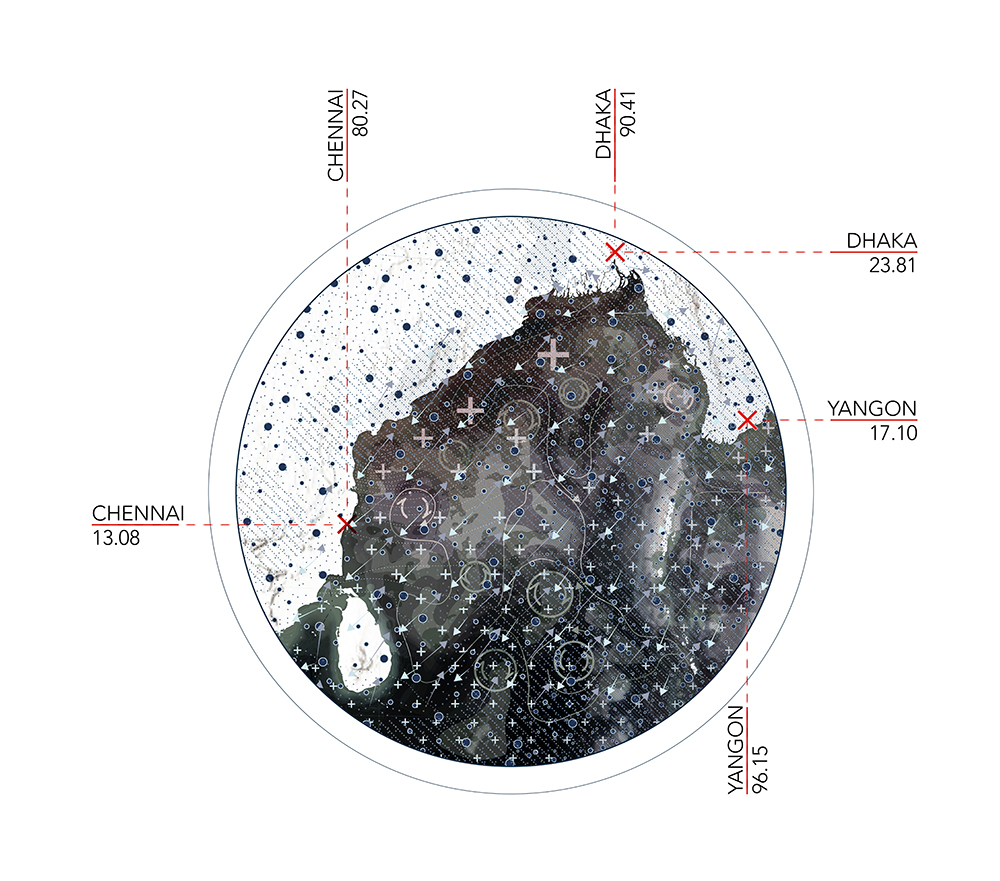 The ambition of this research project was to undertake an interdisciplinary inquiry into the impacts of changing monsoon climates in four of South Asia’s rapidly growing cities. The project was undertaken at a time when climate change and urban development conspired to produce unlikely futures for urban survival. Extreme weather events, all attributed to the monsoon’s capricious nature, are resulting with increasing frequency in water shortages, power failures, floods, out-breaks of disease, damage to property and loss of life. In responding to these events, the project challenged the dominant view of the monsoon as a meteorological system that existed outside of and distinct from society. Instead it proposed that the monsoon was the intra-action between physical and social dynamics entangled within historic lived environments that can be analyzed and changed. To investigate this hypothesis, an interdisciplinary team of spatial designers and environmental humanities scholars was brought together around the operative concept of Monsoon Assemblages. The aim was to produce knowledge of and design strategies for urban environments as more-than-human, monsoonal ecological systems that operate across multiple scales and through media that are indivisibly natural, social, political and technological.
The ambition of this research project was to undertake an interdisciplinary inquiry into the impacts of changing monsoon climates in four of South Asia’s rapidly growing cities. The project was undertaken at a time when climate change and urban development conspired to produce unlikely futures for urban survival. Extreme weather events, all attributed to the monsoon’s capricious nature, are resulting with increasing frequency in water shortages, power failures, floods, out-breaks of disease, damage to property and loss of life. In responding to these events, the project challenged the dominant view of the monsoon as a meteorological system that existed outside of and distinct from society. Instead it proposed that the monsoon was the intra-action between physical and social dynamics entangled within historic lived environments that can be analyzed and changed. To investigate this hypothesis, an interdisciplinary team of spatial designers and environmental humanities scholars was brought together around the operative concept of Monsoon Assemblages. The aim was to produce knowledge of and design strategies for urban environments as more-than-human, monsoonal ecological systems that operate across multiple scales and through media that are indivisibly natural, social, political and technological.
The project aimed to shift conceptions and understandings of the monsoon as a natural meteorological system by treating the monsoon as an organizing principle of urban life; to assess the potential impact of this approach on research, on urban policy, planning and infrastructure; to assess the new political, theoretical and aesthetic agendas for the spatial design disciplines and the environmental humanities that this approach opened up, and to engage critically with the climate change adaption paradigm through the idea of climate co-production.
